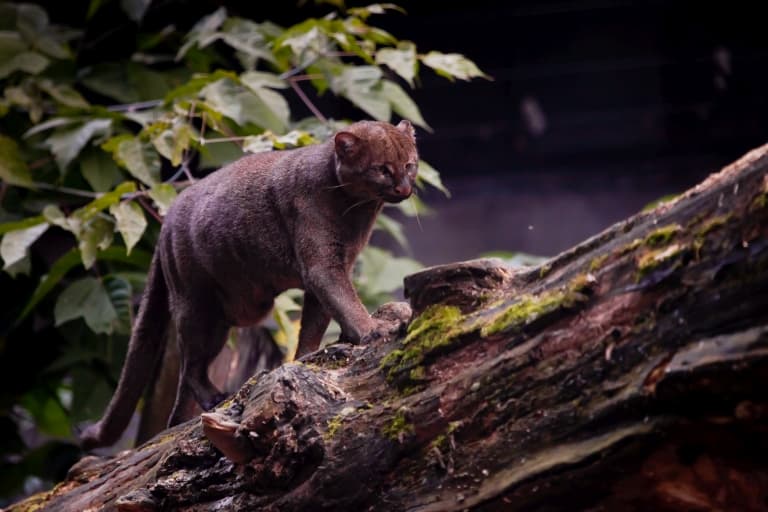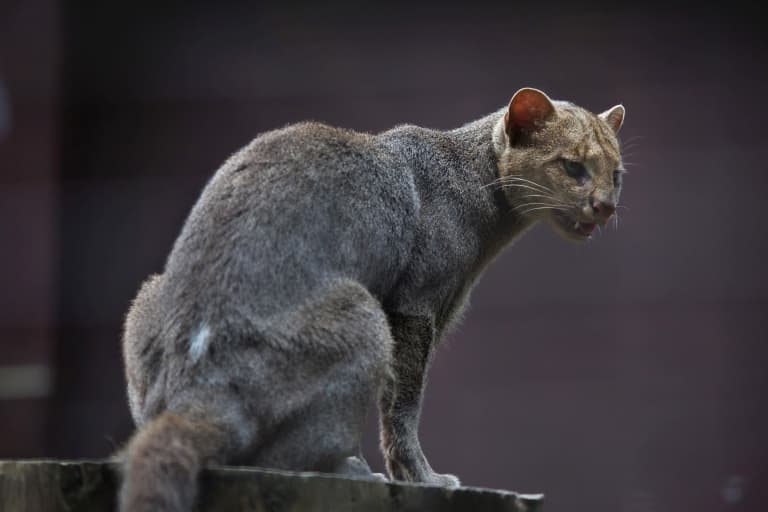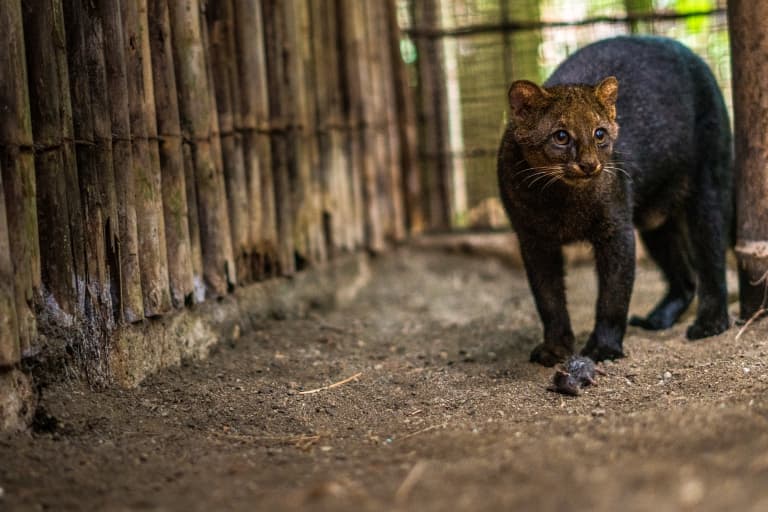Jaguarundi Profile
The jaguarundi (Herpailurus yagouaroundi) is a wild cat native to central and south America. It has a weasel-like appearance, with a long body and short legs.

Jaguarundi Facts Overview
| Habitat: | Wide range, including open areas and both humid and dry forests |
| Location: | Central and South America |
| Lifespan: | 15 years in captivity |
| Size: | ~70cm in length, ~360mm at the shoulder |
| Weight: | 3.5-7kg |
| Color: | Gray or red |
| Diet: | Small mammals, reptiles, birds, frogs, and fish |
| Predators: | Cougars and boa constrictors |
| Top Speed: | 96 kmh |
| No. of Species: |
1 |
| Conservation Status: |
Least concern |
They are carnivores, hunting small animals such as birds, mammals, and reptiles.
They are primarily terrestrial, preferring to hunt from the ground, however they are both excellent climbers and swimmers.
They are usually solitary, although are sometimes found in pairs. They have litters of up to 4 kittens.
Interesting Jaguarundi Facts
1. They are about twice as big as a house cat
This makes them pretty big, but this is still small compared to the cougars or jaguars which also inhabit the region.

2. They are similar in appearance to weasels and otters
They have elongated bodies, short legs, a long tail, and small squished faces.
3. They are very shy
You will struggle to see these cats in the wild as they are shy and reclusive. This partly explains why so little is known about them. 1
4. They are usually solitary
They have sometimes been found in pairs, but this is likely mothers and older offspring or mating pairs.

5. Their closest relative is the cougar
However, cougars are much bigger than the medium-size jaguarundi.
6. The oldest fossil of a jaguarundi dates to 0.5 million years ago
This fossil is from the late Pleistocene era and was found in Brazil.
7. They have a big range
They can be found all the way from Argentina to Mexico.
8. They are active during the day
This is a little unusual for wild cats. They seem to prefer hunting in the mornings, which may be because it helps them avoid other wild cats.
9. They are terrestrial
While other wild cats inhabiting forests may prefer to stick to the trees, these cats hunt primarily on the ground. However, they are also proficient climbers.
10. They can swim across rivers
These cats often inhabit rainforests, where they will swim across medium-sized rivers.
11. They can leap as high as 2m into the air
They do this when hunting birds.
12. They are vocal
They have been recorded making 13 different calls, including screaming, purring, whistling, and yapping.

13. They have a tendency to steal chickens
They are often found eating domestic chickens, leading to conflict with farmers. 2

14. They have litters of up to 4 kittens
These kittens live in dens constructed in dense undergrowth.
Jaguarundi Fact-File Summary
Scientific Classification
| Kingdom: | Animalia |
| Phylum: | Chordata |
| Subphylum: | Vertebrata |
| Class: | Mammalia |
| Order: | Carnivora |
| Suborder: | Feliformia |
| Family: | Felidae |
| Species Name: |
Herpailurus Yagouaroundi |
Fact Sources & References
- Rick J. ADW: Puma yagouaroundi: INFORMATION. Animal Diversity Web. Accessed July 14, 2021.
- Herpailurus yagouaroundi, Jaguarundi THE IUCN RED LIST OF THREATENED SPECIESTM. 2015. doi:10.2305/IUCN.UK.2015-2.RLTS.T9948A50653167.EN
